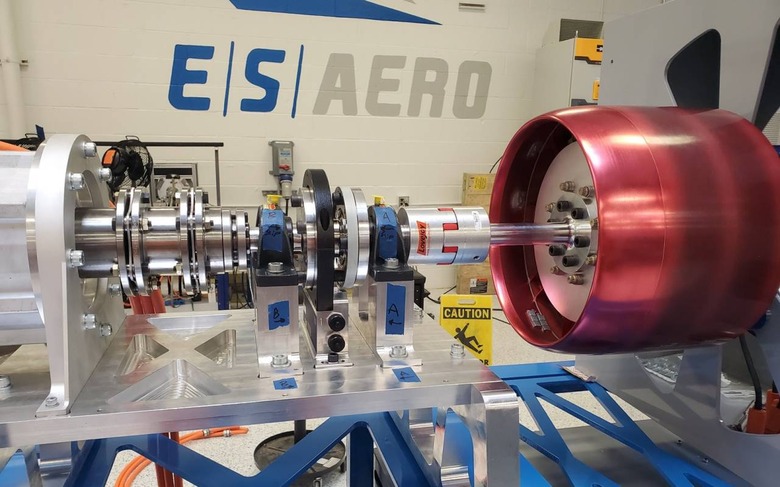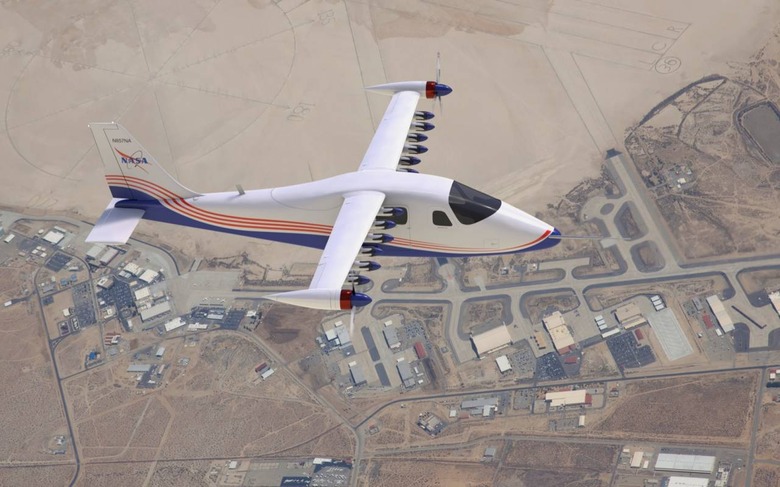Looks Are Deceiving With This NASA X-57 All-Electric Plane
NASA's all-electric X-57 plane may not look like a grand departure from current small aircraft, but the experimental X-plane promises to be something special – assuming it gets past the next stage of testing. The first all-electric model in the X-plane series, the X-57 Maxwell looks much like its Tecnam P2006T donor aircraft for now, but the design is misleading.
That's because we're still in Modification II, or Mod II, stage, NASA explains. There'll be three configurations of the X-57 in total, and right now we're still in the first iteration of those.
It's not to say the changes are minor. Gone is the P2006T's normal Rotax 912S engines, which would normally deliver 100 horsepower and rely on traditional internal-combustion. In their place are electric cruise motors, each 60 kilowatts, mounted to the original wing.

The cruise motors are what will keep the X-57 going in normal flight. Eventually, they'll be paired with so-called high-lift motors, twelve of which will stud the leading edge of the wings. These will provide the lift for take-off and landing, but then deactivate during regular flight periods when the plane is in cruise mode. The propeller blades will fold back, reducing drag; upon reactivation, they'll rely on centrifugal force to spin back out.
Before that, though, the cruise motors need to pass their current round of tests. First off there is endurance and high-power testing, making sure they're both efficient as well as resilient for any untoward power demands the X-57 might face. "The endurance testing involves everything from doing small checks and low power checks, making sure that the motor spins and communicates and gives us the information we need, all the way up to running full mission profiles, and even taking it beyond mission profiles, where you're really pushing the limits of temperature and power," Colin Wilson, ESAero Cruise Motor Acceptance and Qualification Lead, explains.
In parallel, engineers on the project are working on Mod III, the next phase of the aircraft. That will use a new high-aspect ratio wing, and will see the cruise motors pushed out to their final position at the extreme wingtips. Finally, there'll be Mod IV. That'll have the full retractable-blade high-lift motors, and will look distinctly different to the original P2006T.

A second fuselage of that same plane is also being used. That's allowing the X-57 team to figure out how best to mount the new wing to the aircraft, including snaking all the electronics – and positioning the various sensors – in the best possible position. While it's a time-consuming process, carrying that out now rather than when Mod IV is ready for test flights should make for more rapid iteration, the X-plane mangers suggest.
It also paves the way for the X-57's other big goal: acting as a roadmap for third-party all-electric plane projects. NASA's intention isn't just to build a working electric aircraft, but to shape future airworthiness standards for such aircraft for the Federal Aviation Administration (FAA).
"It's critical for the success of the project that we, one, achieve the efficiency goals that we're looking at," Trevor Foster, VP of Operations at NASA partner ESAero, explains, "but also, as we're going through these steps, we're beginning to develop how anyone else in the industry is going to certify or make airworthy motors."
That's getting more pressing, as the commercial sector works on its own electric aircraft. Late last month, the largest electric plane in the world successfully completed its first zero-emissions flight, 28 minutes from takeoff to touchdown in Washington, D.C. Late last year, meanwhile, Rolls-Royce announced it planned to set a world speed record for its ACCEL all-electric plane.
